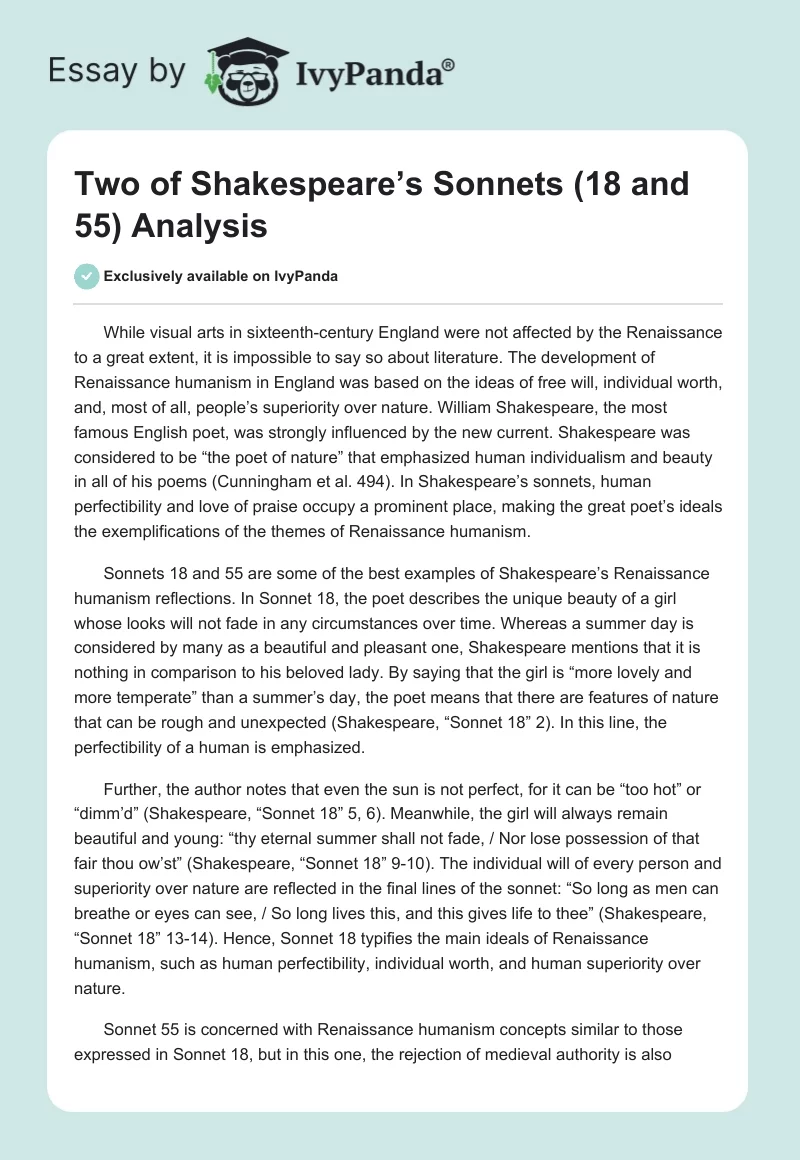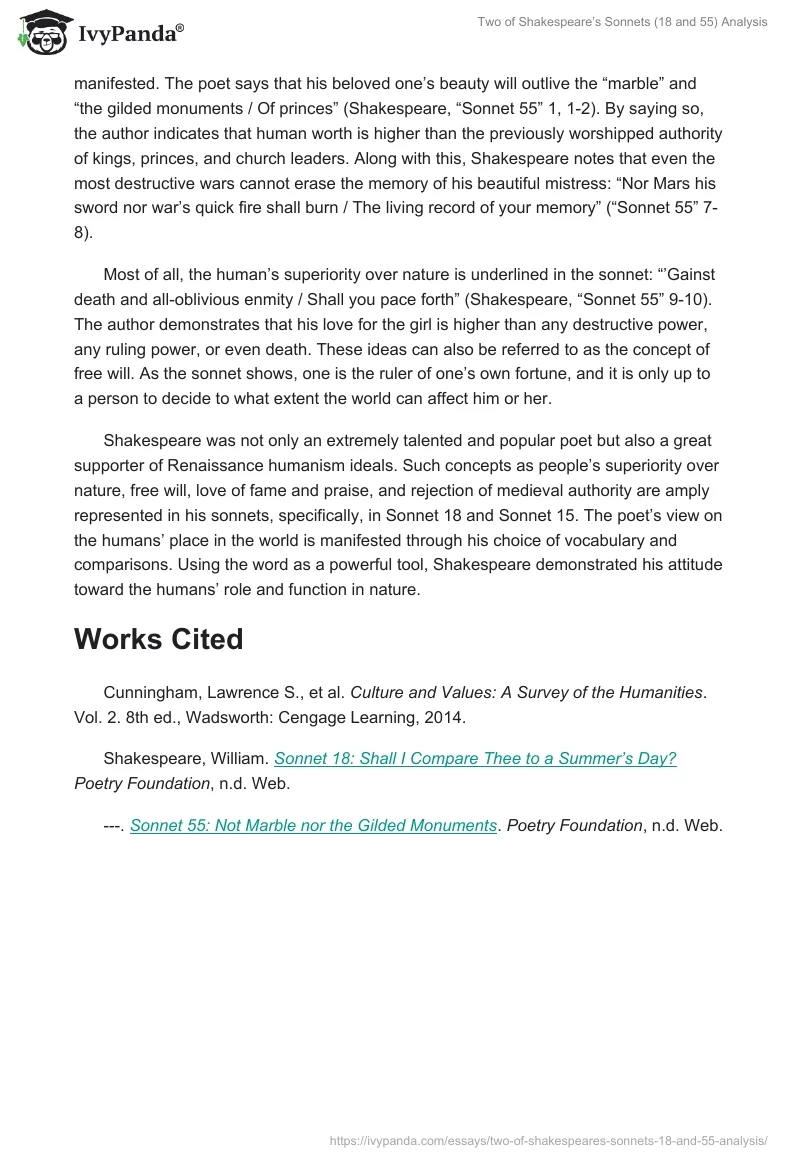While visual arts in sixteenth-century England were not affected by the Renaissance to a great extent, it is impossible to say so about literature. The development of Renaissance humanism in England was based on the ideas of free will, individual worth, and, most of all, people’s superiority over nature. William Shakespeare, the most famous English poet, was strongly influenced by the new current. Shakespeare was considered to be “the poet of nature” that emphasized human individualism and beauty in all of his poems (Cunningham et al. 494). In Shakespeare’s sonnets, human perfectibility and love of praise occupy a prominent place, making the great poet’s ideals the exemplifications of the themes of Renaissance humanism.
Sonnets 18 and 55 are some of the best examples of Shakespeare’s Renaissance humanism reflections. In Sonnet 18, the poet describes the unique beauty of a girl whose looks will not fade in any circumstances over time. Whereas a summer day is considered by many as a beautiful and pleasant one, Shakespeare mentions that it is nothing in comparison to his beloved lady. By saying that the girl is “more lovely and more temperate” than a summer’s day, the poet means that there are features of nature that can be rough and unexpected (Shakespeare, “Sonnet 18” 2). In this line, the perfectibility of a human is emphasized.
Further, the author notes that even the sun is not perfect, for it can be “too hot” or “dimm’d” (Shakespeare, “Sonnet 18” 5, 6). Meanwhile, the girl will always remain beautiful and young: “thy eternal summer shall not fade, / Nor lose possession of that fair thou ow’st” (Shakespeare, “Sonnet 18” 9-10). The individual will of every person and superiority over nature are reflected in the final lines of the sonnet: “So long as men can breathe or eyes can see, / So long lives this, and this gives life to thee” (Shakespeare, “Sonnet 18” 13-14). Hence, Sonnet 18 typifies the main ideals of Renaissance humanism, such as human perfectibility, individual worth, and human superiority over nature.
Sonnet 55 is concerned with Renaissance humanism concepts similar to those expressed in Sonnet 18, but in this one, the rejection of medieval authority is also manifested. The poet says that his beloved one’s beauty will outlive the “marble” and “the gilded monuments / Of princes” (Shakespeare, “Sonnet 55” 1, 1-2). By saying so, the author indicates that human worth is higher than the previously worshipped authority of kings, princes, and church leaders. Along with this, Shakespeare notes that even the most destructive wars cannot erase the memory of his beautiful mistress: “Nor Mars his sword nor war’s quick fire shall burn / The living record of your memory” (“Sonnet 55” 7-8).
Most of all, the human’s superiority over nature is underlined in the sonnet: “’Gainst death and all-oblivious enmity / Shall you pace forth” (Shakespeare, “Sonnet 55” 9-10). The author demonstrates that his love for the girl is higher than any destructive power, any ruling power, or even death. These ideas can also be referred to as the concept of free will. As the sonnet shows, one is the ruler of one’s own fortune, and it is only up to a person to decide to what extent the world can affect him or her.
Shakespeare was not only an extremely talented and popular poet but also a great supporter of Renaissance humanism ideals. Such concepts as people’s superiority over nature, free will, love of fame and praise, and rejection of medieval authority are amply represented in his sonnets, specifically, in Sonnet 18 and Sonnet 15. The poet’s view on the humans’ place in the world is manifested through his choice of vocabulary and comparisons. Using the word as a powerful tool, Shakespeare demonstrated his attitude toward the humans’ role and function in nature.
Works Cited
Cunningham, Lawrence S., et al. Culture and Values: A Survey of the Humanities. Vol. 2. 8th ed., Wadsworth: Cengage Learning, 2014.
Shakespeare, William. Sonnet 18: Shall I Compare Thee to a Summer’s Day?Poetry Foundation, n.d. Web.
—. Sonnet 55: Not Marble nor the Gilded Monuments. Poetry Foundation, n.d. Web.


